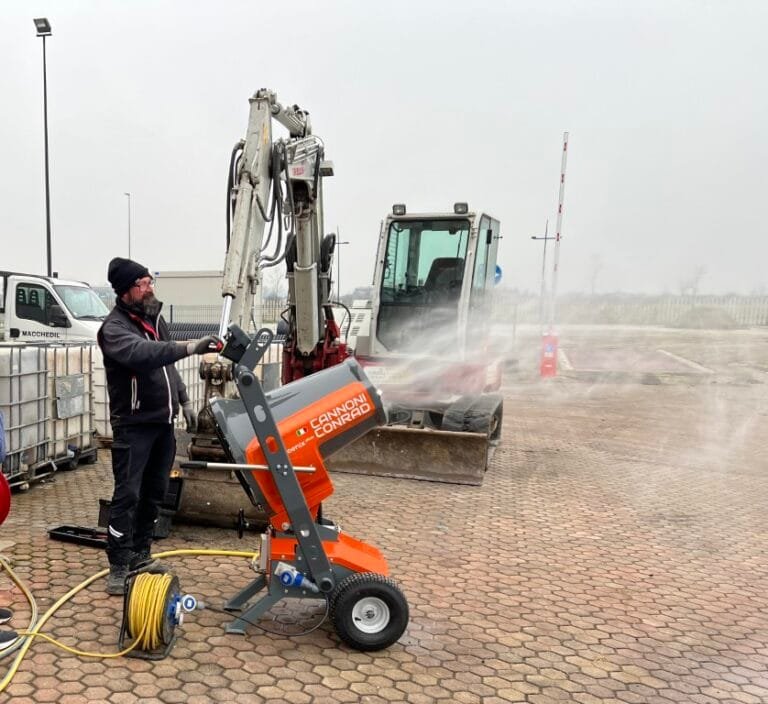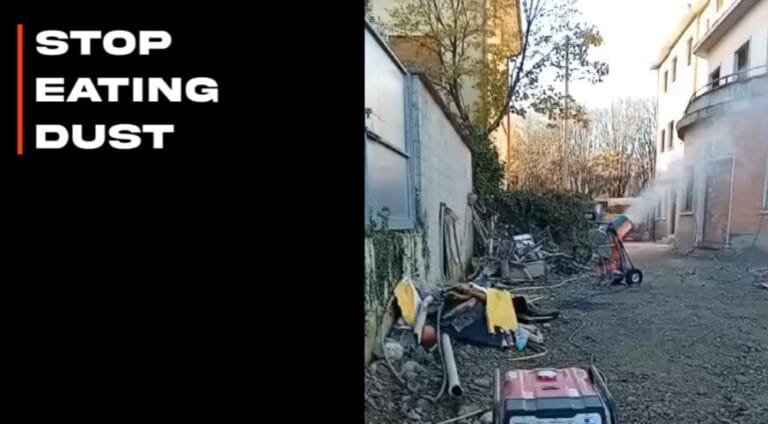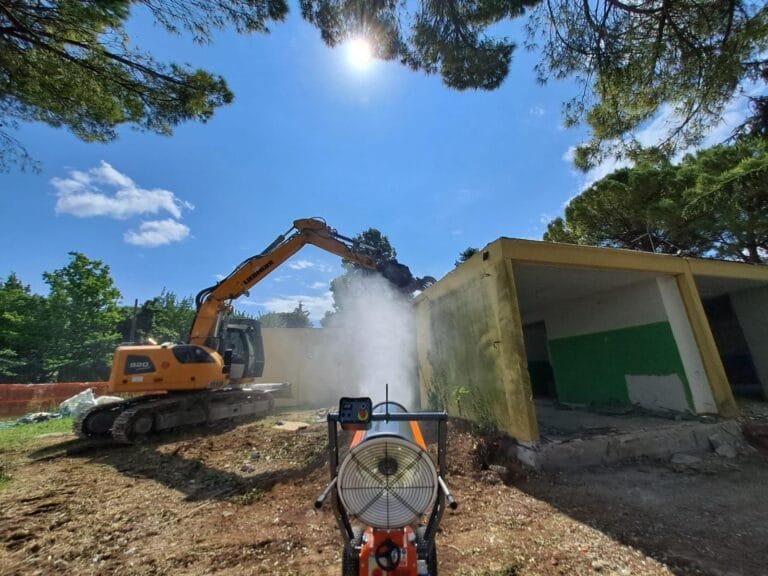An Opportunity for a Sustainable Future
Demolition in the Circular Economy: An Opportunity for the Sustainable Future
In the modern era, the circular economy is rapidly emerging as a vital approach to addressing the environmental and economic challenges of our time. One of the less discussed but equally crucial components of this concept is the practice of circular demolition. In this article we will explore the meaning and importance of demolition in the circular economy, highlighting its implications for a sustainable future.
What Does Demolition Mean in the Circular Economy?
Traditionally, demolition has been seen as a destructive act, associated with negative environmental impact and waste of resources. However, in the context of the circular economy, demolition is reconsidered as an opportunity to recover and reuse valuable resources. Rather than being seen as the end of the life cycle of a building or product, demolition becomes the starting point for a new resource-efficient process.
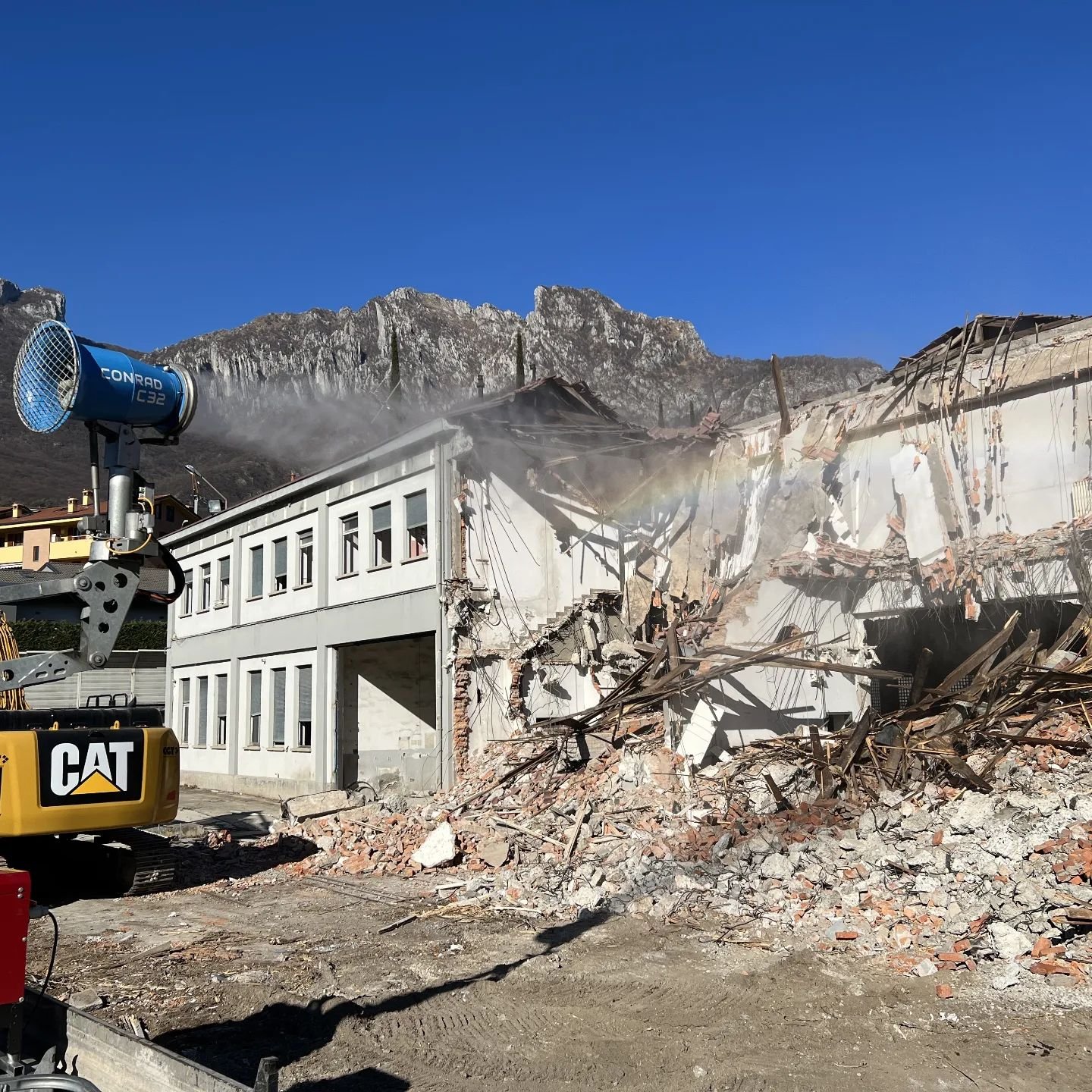
Circular Demolition Practices
Circular demolition is based on three key principles:
-
Waste Prevention: Even before the demolition of a structure is carried out, options to reuse or repurpose existing materials are explored. This may involve deconstruction, i.e. the controlled disassembly of buildings to recover construction materials such as wood, bricks, metal, and more.
-
Reuse and Recycling: Materials extracted during demolition are reused or recycled as much as possible. For example, wood can be shredded and used to produce new wood panels, metal can be melted down to create new metal structures, and so on. This process reduces dependence on virgin raw materials and reduces the waste stream to landfills.
-
Waste valorisation: Even materials that cannot be directly reused or recycled can be valorised through innovative techniques. For example, demolition waste can be turned into solid recovered fuels (SRF) for energy or used in the production of alternative building materials such as recycled concrete blocks.
Economic and Environmental Benefits
The adoption of circular demolition brings a number of both economic and environmental benefits:
-
Saving Resources: By using existing materials instead of extracting new resources, circular demolition helps to preserve the planet's limited natural resources.
-
Reduction of Disposal Costs: By reusing and recycling materials, construction companies can save on waste disposal costs while enhancing their reputation as responsible actors.
-
Job Creation: Circular demolition requires specialised skills in deconstruction and recycling of materials, creating job opportunities in the sustainable construction sector.
-
Reducing the Environmental Footprint: By reducing the need to extract new resources and the amount of waste going to landfill, circular demolition helps mitigate the environmental impact of the construction industry.
Circular demolition is an essential step towards a more sustainable and resilient economy. By transforming demolition from an act of destruction to an opportunity to create value through resource recovery and reuse, we can reduce the environmental impact of our construction activity and promote more responsible management of the planet's resources. Investing in circular demolition practices is not only an investment in a sustainable future, it also offers an opportunity for construction companies to distinguish themselves as leaders in the 21st century green industry.
Read also the article by Federico Della Puppa, Head of Analysis & Strategies at Smart Land and one of the leading experts in data processing and market strategies, on E-Costruction: https://www.e-construction.org/demolizioni-un-mercato-in-piena-crescita/, where he reports a very interesting figure "d2000 to date, demolition work on the existing stock has increased from 1.3% to 25%'.
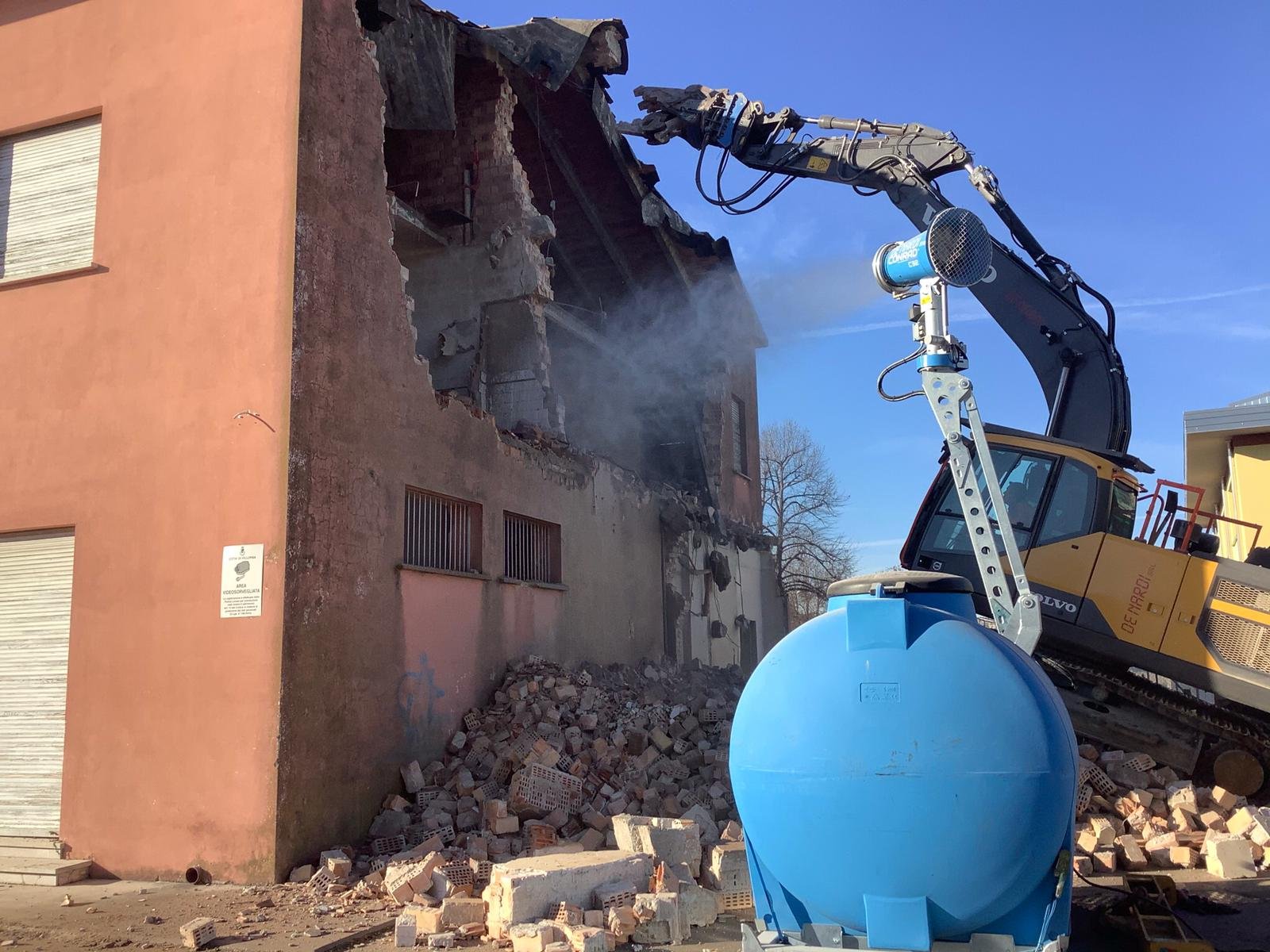
How can spray cannons help the demolition world in this ecological and sustainable turnaround?
Spray cannons as devices designed to reduce the dispersion of dust in the air during various activities, including demolition, play a significant role in the transition to a more ecological and sustainable approach.
The dust suppression gun is a product that must be constantly present in the entire demolition chainduring the building demolition activity, during the loading of rubble and construction waste, during the screening of waste material in the landfill and during all loading and unloading operations involving dust generation.
Here's how spray cannons can contribute to this breakthrough:
-
Control of Dust Emissions: During the demolition of buildings or other structures, the movement of materials such as concrete, brick and other debris can generate a significant amount of fine dust in the air. This dust can be harmful to human health and the surrounding environment. Spray cannons can be used to spray water or aqueous solutions over work areas, capturing the dust particles and thus reducing their dispersion in the air.
-
Minimisation of Environmental Impact: By reducing the amount of airborne dust, spray cannons help preserve air quality and protect surrounding ecosystems. This is especially important in dense urban areas, where demolition activities can have a significant impact on public health and the environment.
-
Regulatory Compliance: Many environmental regulations require the control of dust emissions during demolition and construction activities. The use of spray cannons can help demolition companies comply with these regulations and avoid fines or penalties.
-
Improvement of Working Conditions: By reducing the amount of dust in the air, spray cannons improve working conditions for field workers. This can help reduce the health risks associated with exposure to fine dust and improve the overall well-being of workers.
-
Efficiency in the Use of Resources: By using water or aqueous solutions to control dust, spray cannons not only reduce air pollution, but also utilise readily available and renewable natural resources. This makes them a relatively inexpensive and environmentally friendly solution for controlling dust emissions.
-
Reducing wastage of water resources: Using spray cannons manages water more rationally. Misting rationalizes water in a sustainable way by using only the water needed to break down the dust, without unnecessary stagnation, puddles and rivulets. Definitely cheaper than using a normal water hose.
The use of spray cannons in the demolition sector can be a significant step towards a greener and more sustainable industry. By integrating this technology into demolition practices, companies can reduce the environmental impact of their operations, improve working conditions and contribute to better air quality for surrounding communities.

